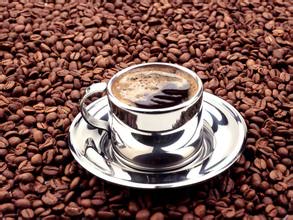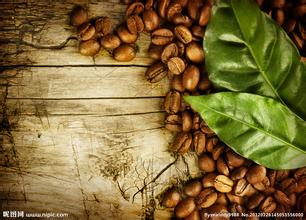El Salvador Coffee Variety types El Salvador Coffee production conditions
Coffee (Xoffea arabica Linn) Coffee is a perennial evergreen shrub or small tree of Rubiaceae. It is a horticultural perennial cash crop with the characteristics of fast growth, high yield, high value and wide market. Wild coffee trees can grow to a height of 5 to 10 meters, but coffee trees planted on the manor are often cut to a height of less than 2 meters in order to increase the amount of fruit and facilitate harvesting. Coffee tree opposite leaves are long oval, smooth leaves, the end of the branch is very long, few branches, and the flowers are white, open at the base of the petiole connecting the branch. The ripe coffee berries look like cherries and are bright red with sweet flesh and contain a pair of seeds, namely coffee beans (Coffee Beans). Coffee varieties can be divided into small-grain, medium-grain and large-grain species, the former contains low caffeine content and strong flavor, while the latter two have high caffeine content but poor flavor. At present, coffee sold in the world is generally made of small and medium seeds in different proportions, usually 70% of medium seeds, mainly caffeine, and 30% of small seeds, mainly for their aroma. Each coffee variety generally has a few to a dozen variants. Coffee is more resistant to shade and cold, but not resistant to light, drought and disease. Coffee contains nine kinds of nutrients, such as caffeine, protein, crude fat, crude fiber and sucrose. As a beverage, coffee is not only mellow and delicious, slightly bitter and sweet, but also can excite nerves and dispel fatigue. In medicine, caffeine can be used as an anesthetic, stimulant, diuretic and cardiotonic, as well as to help digestion and promote metabolism. The pulp of coffee is rich in sugar and can be used to make sugar and alcohol. Coffee flowers contain essential oils that can be used to extract high-grade spices. Coffee trees-country of origin
Coffee tree
Coffee tree atlas
Native to Brazil, it is another hybrid tree species; somewhere between CATURRA and MUDO NOVO. The tree is usually low in shape, but slightly taller than CATURRA and easy to harvest, and the coffee fruit begins to bear fruit in late summer. It has more sour taste, and a good sour taste, like lemons and oranges, makes you secrete salivary acid, which is the characteristic of high-quality ARABICA coffee beans usually produced at high altitude and high density. Its good sour taste will not upset your stomach, but can provide a function to clear the taste and boost the mind. Professional coffee connoisseurs appreciate the medium to deep roasting performance of CATUAI. It releases strong tobacco aroma and fresh, lively sour taste, coupled with a thick, thick fat (CREAMA), is the best lover who prefers "espresso"! This variety is very popular in Japan.
CATURRA [Katula] was first found in Brazil and is also the result of hybridization with BORBON. Its plant is short and compact, so it has more shade, forming a good windproof effect, so that its flowers are not easy to be blown down by the wind, and bear more fruit. CATURRA tastes like BORBON (American whisky) with a thick soup-like feel and a deep syrup-like ultra-high fat, creamy mouthfeel. Medium acidity, with slightly acidic and sweet dark chocolate finish in medium and deep roasting, is an unforgettable espresso. PACAMARA was first found in El Salvador (Central America). It continues to develop because of its suitable natural environment and good planting under the loose soil of volcanic ash. It is famous for its extra-large bean shape and clear and pure taste. Overall: PACAMARA is a multi-flavor, rich coffee bean. Elegant soft and sour taste, with berry-like fruit aromas throughout, with a pleasant and satisfying taste in the finish. PACAMARA is one of the hybrids of BORBON, so it has the soft and sweet characteristics of BORBON. In the performance of medium baking, it has a bold but sour and bitter taste, and has a nutty taste, while in deep baking, it has dark chocolate flavor.

Important Notice :
前街咖啡 FrontStreet Coffee has moved to new addredd:
FrontStreet Coffee Address: 315,Donghua East Road,GuangZhou
Tel:020 38364473
- Prev

Costa Rican Coffee Tree Research and planting Costa Rican Coffee production area
The research center of coffee bean planting environment research and planting editor, located about 30 kilometers northeast of San Jose, the capital of Costa Rica, belongs to the Costa Rican Coffee Association. It is a research institution for planting, breeding and quality inspection of Brazilian coffee fruit in Costa rica. in addition, it also has a 10-hectare experimental field, planting a number of excellent varieties. The coffee is from Costa Rica.
- Next

Species Morphology and Variety Grade History of Colombian Coffee
The main varieties of Colombian coffee are small grains of coffee. Plants are small trees or large shrubs, 5-8 m tall, usually much branched at base; old branches gray-white, nodes dilated, young branches glabrous, compressed. Leaves thinly leathery, ovate-lanceolate or lanceolate, 6-14 cm long and 3.5-5 cm wide, tip long acuminate, acuminate part 10-15 mm long, base cuneate or slightly obtuse, rarely rounded, entire or
Related
- Does Rose Summer choose Blue, Green or Red? Detailed explanation of Rose Summer Coffee plots and Classification in Panamanian Jade Manor
- What is the difference between the origin, producing area, processing plant, cooperative and manor of coffee beans?
- How fine does the espresso powder fit? how to grind the espresso?
- Sca coffee roasting degree color card coffee roasting degree 8 roasting color values what do you mean?
- The practice of lattes: how to make lattes at home
- Introduction to Indonesian Fine Coffee beans-- Java Coffee producing area of Indonesian Arabica Coffee
- How much will the flavor of light and medium roasted rose summer be expressed? What baking level is rose summer suitable for?
- Introduction to the characteristics of washing, sun-drying or wet-planing coffee commonly used in Mantenin, Indonesia
- Price characteristics of Arabica Coffee Bean Starbucks introduction to Manning Coffee Bean Taste producing area Variety Manor
- What is the authentic Yega flavor? What are the flavor characteristics of the really excellent Yejasuffi coffee beans?

